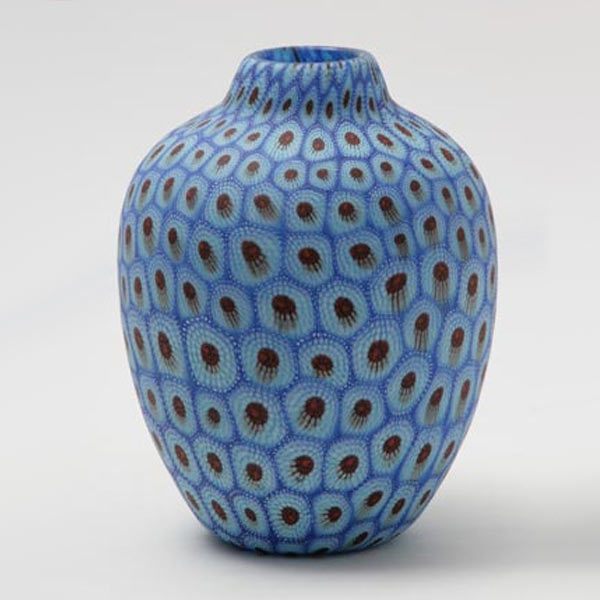
This is a very old technique. There are artefacts made this way, which date back to Roman times. Fallen into oblivion, it was rediscovered the middle of the 19thc century and used in the factories of Venini and Artisti Barovier & C.
To make murrhines means to prepare a bundle of long, multicoloured glass rods, arrange, combine and melt them together so that they are fused together in cross-section pattern. After cooling, the rod is cut up into small disks of variable thickness. It ranges from just a few millimetres to a couple of centimetres. The disks are now ready to be used in several ways.
The first step consists in preparing a set of murrhines on a metal plate according to a given design, heating them up and then making them adhere. The second step is to place the murrhines on a glass object with cylindrical shape that is still connected to the blower's pipe. After this process is finished, sometimes the item is coated with a layer of transparent glass and given its final design. Most vases produced in the 40s and 50s were made with this technique by Artisti Barovier, F.lli Toso and Venini.
A second method that is used primarily for decorative plates and bowls is as follows: The murrhines are arranged in a shape for a given pattern. You fill the cavities with glass powder to get a homogeneous surface. This is heated and the murrhines are linked together. After cooling, the item is finished off with the grinding wheel to remove any irregularities. The most famous ornamental plates were made by Carlo Scarpa for Venini in the 40s and in the 60s it was Alfredo Barbini for Venini & C.


